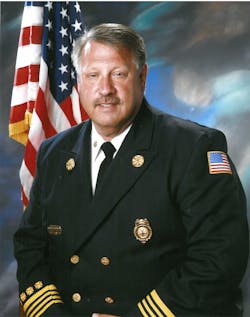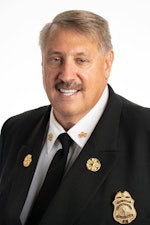At a recent conference, I was listening to a lecture about how a fire department recently started a mobile integrated healthcare (MIH) program in their community to visit people at home who had just been discharged from the hospital. The goal was to check on the patients to see if they were having any complications, hopefully preventing them from needing to call 9-1-1 at a later time. After the presentation, I posed a simple question to the presenter: “How much are you being paid by the hospital or insurance company to go on these calls?” The answer was “nothing.”
The money trail
With the introduction of the Affordable Care Act (ACA), MIH in EMS has certainly become the new buzzword of the day. Even though the ACA seems to be faltering as some hospitals and other healthcare facilities opt out of being a part of an Accountable Care Organization (ACO), it looks like fire departments are moving forward with doing one, some or all three forms of MIH in their communities.
Fire departments doing MIH fall into three levels of service: 1) screening of 9-1-1 calls at the communications center and rerouting them to another pathway, such as Houston’s ETHAN project, which has patients doing face-to-face communications over video and directing them to clinics with cabs instead of going to an emergency room (ER) in an ambulance; 2) fire departments that respond to the scene in something other than an ambulance and treat and release the patient; and 3) fire departments that work with hospitals to visit patients who have been discharged from the hospital and require follow-up care to prevent readmissions to the hospital.
In all three cases, there are some fire departments that are anxious to jump on the bandwagon and start a program. Unfortunately, without proper planning and coordination with other healthcare providers in the community, your fire department is footing the bill without the possibility of compensation. All you’re doing is making the hospitals, insurance companies and other healthcare facilities richer.
Hospitals, insurance companies and healthcare facilities financially and operationally benefit from your fire department’s programs. For example, if you are screening patients out of the system at the 9-1-1 center or responding to a scene and treating and releasing a patient, you are keeping the hospital ERs from getting clogged up. With fewer patients, hospitals can have fewer staff members in the ER, which is a cost savings, and patients who do come to the ER experience shorter wait times. Shorter wait times translates into more dollars for the hospital since part of their reimbursement in some situations is dependent upon patient satisfaction metrics under the ACA. According to a 2013 Wall Street Journal article, “Over the next year, nearly $1 billion in hospital payments will be based in part on patient satisfaction, determined by the 27-question government survey administered to patients. Hospitals with high scores will get a bonus payment. Those with low scores will lose money.”
In other cases, ACOs manage the money and already have the money from payers, such as yourself and employers, and their goal is to reduce costs to show a larger profit margin, which it then shares with all the hospitals and other healthcare providers in the ACO.
Some fire departments fund the MIH program through grants. The Peoria, Goodyear, Surprise, Avondale and Sun City fire departments in Arizona received a $125,000 grant starting on July 1, 2016, to run a community paramedic program for one year with the goal of reducing calls from frequent users of the 9-1-1 system.
Some departments have a direct contract with a hospital. Such is the case with Tualatin Valley Fire & Rescue’s EMS Division in Oregon. Through a contract with Legacy Meridian Park Medical Center, fire district firefighter/paramedics visit patients after they are discharged from the hospital, with a goal of decreasing hospital readmissions. The program was continued after a successful pilot project with the hospital.
Get your share
It looks like the wave of MIH is starting to transform how fire departments provide EMS. Although there are many goals of an MIH program, and many advantages for fire departments, one of those should be to make the program revenue-neutral or revenue in excess of expenditures to grow the program or create a buffer for other cost overruns. In other words, fire departments should follow the approach of Rod Tidwell (Cuba Gooding Jr.) in the movie Jerry Maguire and say, “Show me the money!”







